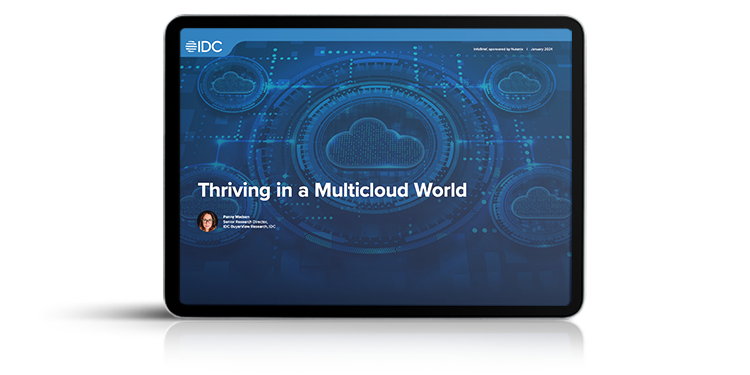What is cloud service?
Cloud service is a general term used to describe on-demand services delivered through the cloud. These services are granted to clients and organisations, who in turn can access their applications, workloads, and other resources without specialised hardware or internal infrastructure. Common tasks users can perform include accessing their emails, working on collaborative documents, requesting technical support, and more. Nearly all employees rely on some kind of cloud computing service.
In addition, cloud services are managed by a cloud service provider. As a result, users can easily and affordably access the information they need without the burden of complex provisioning and management.
For many organisations, cloud services are attractive because they can easily scale to support and serve a growing user base. Since the cloud service provider is in charge of the hardware and cloud infrastructure behind the technology, the company can minimise resource waste and keep their IT staff on more high-value projects rather than cloud service provisioning activities.
Get hands-on experience with the Nutanix Cloud Platform on your own hardware. Register today!

Examples of cloud services and cloud offerings
Cloud services are closely tied to as-a-service cloud offering types: software-as-a-service (SaaS), platform-as-a-service (PaaS), and infrastructure-as-a-service (IaaS).
Infrastructure-as-a-Service (IaaS)
IaaS uses the Internet to deliver support operations and virtual resources. In this model, a cloud provider is responsible for hosting the infrastructure, which also includes the hardware, servers, hypervisor, and other layers. These components usually encompass computing, storage, operating systems, virtualisation, and networking, with some providers even extending their services to include databases and message queuing. Think of it as having a virtualised data centre in the cloud that users interact with through an API or dashboard. While this grants users substantial control, they are still tasked with overseeing the management of the operating system, middleware, runtime environment, applications, and data. Two of the most well-known IaaS examples include Amazon Web Services (AWS) and Microsoft Azure.
Platform-as-a-Service (PaaS)
PaaS supplies the essential elements for software development, testing, execution, and upkeep. This encompasses infrastructure, operating systems, middleware, development environments, and developer tools. Developers most frequently use PaaS to build their software and applications rather than purchasing costly infrastructure or starting from scratch with their own complex, time-consuming code. Typically, users connect to this platform through the Internet, enabling them to concentrate on their applications without the need to handle resource management. With PaaS, users have the flexibility to deploy either standardised or customised applications, leveraging supported programming languages, scripts, APIs, and tools. Amazon Web Services (AWS) Elastic Beanstalk, Microsoft Azure, and Magento Commerce Cloud are all examples of PaaS.
Software-as-a-Service (SaaS)
SaaS is the most commonly recognised user-facing offering. It represents an operational approach in which applications are cloud-hosted, accessible to users via the Internet. Applications and data are managed by the organisation, whereas the rest, including servers, storage, networking, and more, are managed by the cloud provider. SaaS examples include Google Apps, Dropbox, Salesforce, Cisco WebEx, Microsoft Office 365, and Workday.
Anything-as-a-Service (XaaS)
Anything-as-a-Service (XaaS) refers to a broad category of cloud computing services where various resources and capabilities are provided over the Internet as a service. It is a flexible and scalable model that allows organisations to access and utilise a wide range of technology-related resources and services, from traditional infrastructure components like computing power and storage (IaaS) to software applications (SaaS) and many other services in between.
How do cloud services work?
Cloud services are services hosted by a cloud service provider. The provider virtualises software and applications that reside on their physical servers in massive data centres. The virtualised services are then available for customers to access through the Internet. With a simple online connection, users can access applications and services without having to house a lot of physical hardware or install software on their devices. Saving data “to the cloud” means saving information on a remote server owned by a cloud service provider, rather than on your company’s own servers.
Cloud service providers typically charge customers who use their services on either a monthly subscription or per-use basis—which can often make cloud services much less expensive for an organisation because they don’t have to host (and manage, maintain, update, etc.) specific software in their own on-premises data centre.
When speaking of services, cloud services could be any number of things, including servers, software applications, networks, databases, analytics platforms, AI programs, online services for banking, shopping, chatting with friends, and much more. Cloud service providers host, manage, and maintain data centres and related storage, compute power, and networking resources. They also maintain security on their physical hardware and provide some security features for users who access data and applications through the cloud.
Cloud service benefits for businesses
There are innumerable benefits to cloud computing as a whole, but cloud services in particular can boost those capabilities while minimising complexity overall.
In fact, recent research shows that by 2025, approximately 51% of an organisation’s IT budget will be used for the development and operations of cloud-based systems. This demonstrates the significant expansion of cloud services, especially when compared to the fact that cloud-based systems development and operations made up just 41% of the IT budget in 2022.
Cloud services offer several advantages that businesses find alluring, including:
Reduced need for hardware. Businesses can reduce or even eliminate their data centre footprint by relying on cloud computing services rather than physical servers and reduce the number of dedicated IT specialists needed in a data centre.
Excellent cost savings. Compared to traditional data centre approaches, cloud services offer a more flexible consumption model that allows organisations to pay only for the servers and infrastructure that they need. During lulls, these resources can be de-provisioned and used at a later time if needed.
Decreased IT burden. Because cloud services are managed by the cloud provider, businesses do not need to worry about maintaining uptime on their own. Instead, they can focus their attention and resources on other activities. As long as Internet access is available, employees can access their data and applications from nearly anywhere in the world.
Anytime, anywhere access. Today’s workforce is mobile, and much of it is remote, so cloud services need to make data and applications available no matter what. Cloud services mean employees can work from anywhere and from any device, including mobile phones and tablets.
Enhanced collaboration. Remote teams can work across a single virtual platform, share details in real time, and work through a shared cloud storage system. In addition, this collaborative benefit means a lower dependency on physical data centres, creating more “green” businesses.
Thriving in a Multicloud World
This InfoBrief from IDC presents recent cloud trends, the technologies that leading cloud adopters target and respective timeframes for implementation.

How are cloud services used?
Today, there are thousands of ways to use cloud services. Most companies offer online services, even if it’s something as simple as logging in to check your account details. People expect organisations to offer convenient cloud services to make and check in for appointments, make purchases, transfer funds, get medical test results, get school grades, sign up for classes, order prescriptions, and much more. And it’s not just consumer services—businesses use cloud services just as often.
Here are some of the most common cloud services used by modern organisations:
- Email – Most people use cloud services for email today, even if their organisation has an email server. That’s because employees like to use a variety of devices and access email wherever they are, whenever they need to. Email services through the cloud keep colleagues in close touch.
- Collaboration services – Chat and file sharing spaces, such as Slack or WebEx, allow work teams to consult each other and collaborate regardless of where each team member is located.
- Meeting services – Similar to collaboration services, online meeting applications allow organisations to meet together with clients, coworkers, partners, investors, and other stakeholders all over the world.
- Big data analytics – Data is a primary asset for any organisation and modern analytics programs are allowing leaders to gain critical insights into their operations, processes, products, and other areas to see how they can streamline, save money, and make things more efficient.
- Software development – Many cloud services facilitate software and app development, which is critical for organisations so they can offer the online services their customers want.
- AI and machine learning platforms – AI and machine learning are becoming increasingly common in enterprise spaces, as organisations apply these cutting-edge technologies to their most critical challenges.
- Data backup and recovery – Many organisations use online backup and recovery services managed by third-party providers to ensure that their data and applications are still available in the event of a security breach or system malfunction.
- Security and compliance – Some providers also offer convenient online security and compliance applications that help organisations adhere to ever-evolving (and increasingly complex) security and privacy mandates.
Explore our top resources

Navigating Uncertainty: Essential Insights for Infrastructure Planning

Accelerating Value Realisation from Cloud Investments

Design, architecture, and best practices
Related products and solutions
Nutanix Cloud Infrastructure
Standardise on powerful and secure hyperconverged infrastructure to deliver all applications and data at any scale, on any cloud.
AHV virtualisation
Modern and secure virtualisation platform that powers VMs and containers for applications and cloud-native workloads on-premises and in public clouds.
AI / ML
AI-ready infrastructure that is easy to get started and run across both your core and edge, and that delivers all the power and integrated data services your developers and data scientists need.
Security Central
Unify security and infrastructure operations for your workloads and data on any cloud type with cloud security managed services.
Nutanix Cloud Clusters (NC2)
Reduce the operational complexity of hybrid cloud deployments and management when extending, bursting, and migrating apps and workloads.
Nutanix Kubernetes Engine
Fast-track your way to production-ready Kubernetes and simplify lifecycle management with Nutanix Kubernetes Engine, an enterprise Kubernetes management solution.
